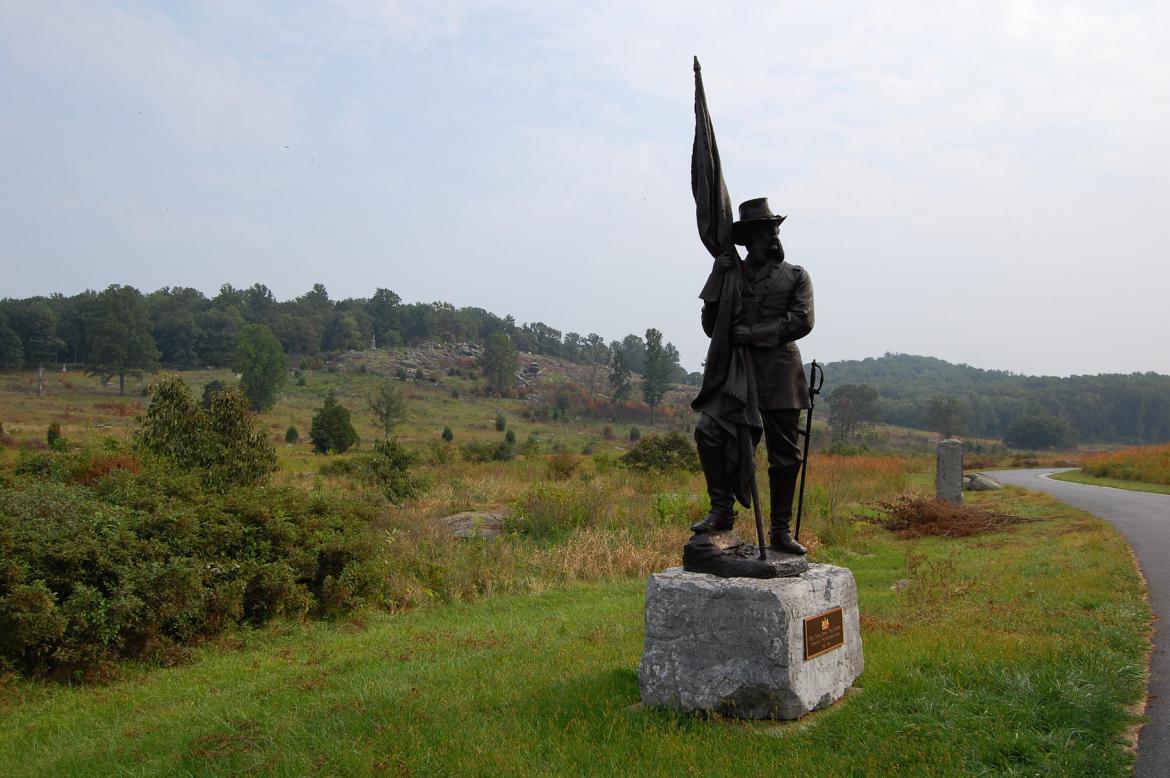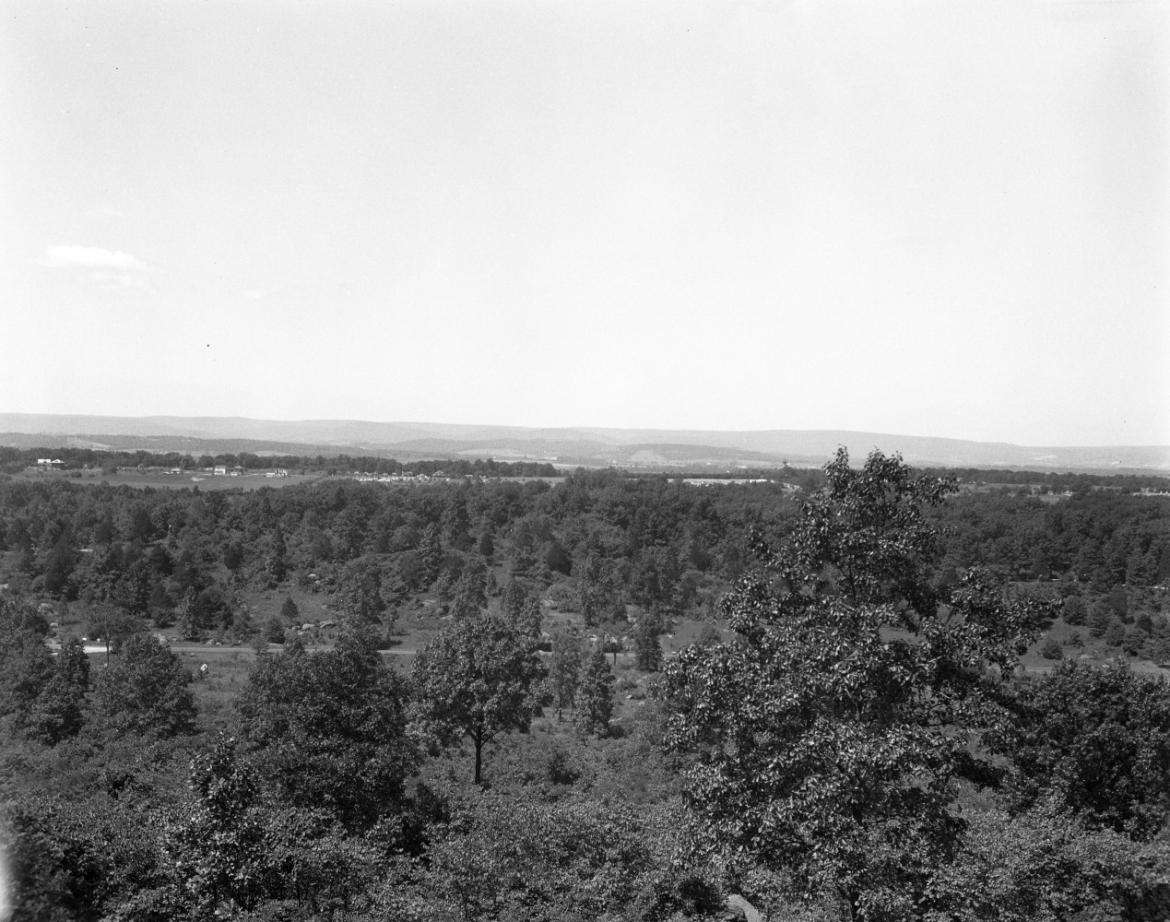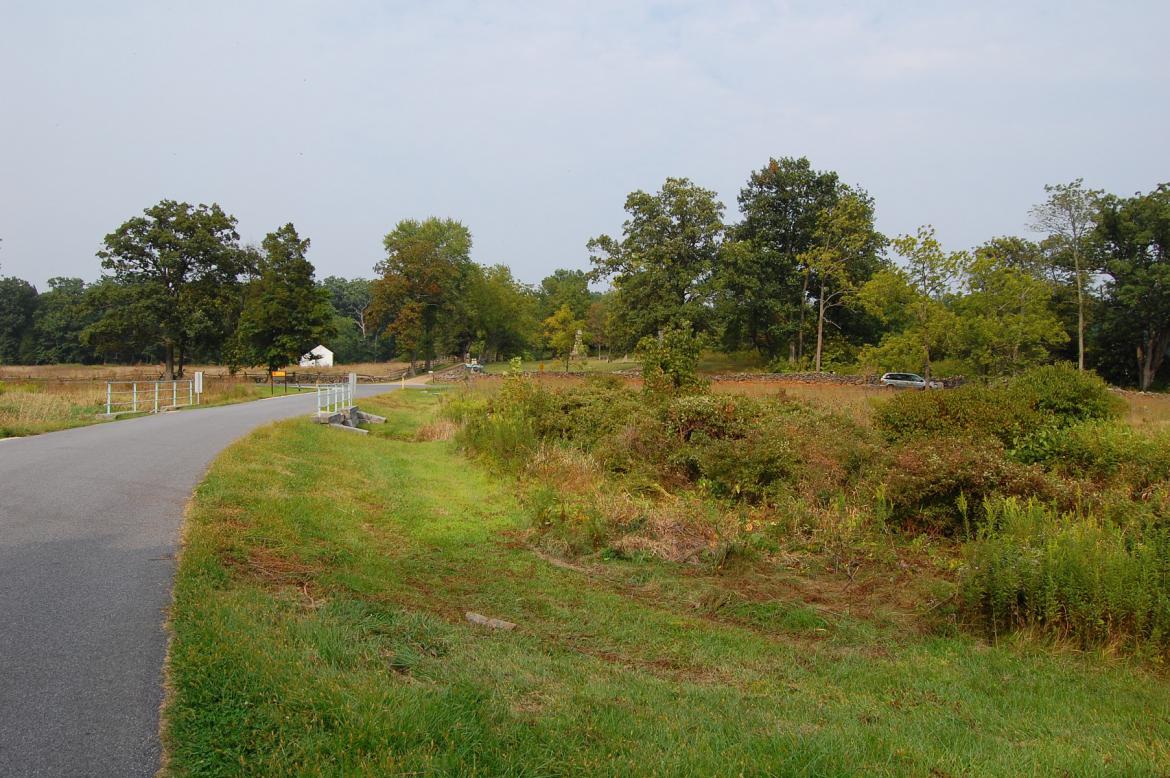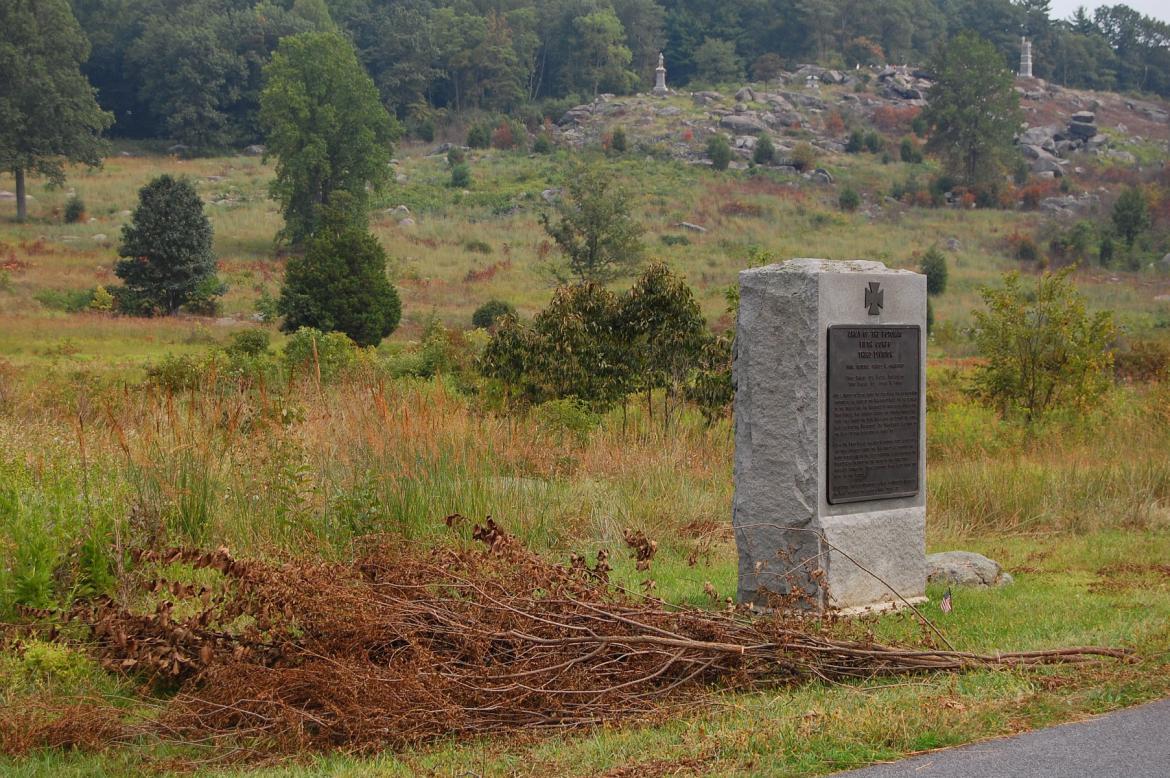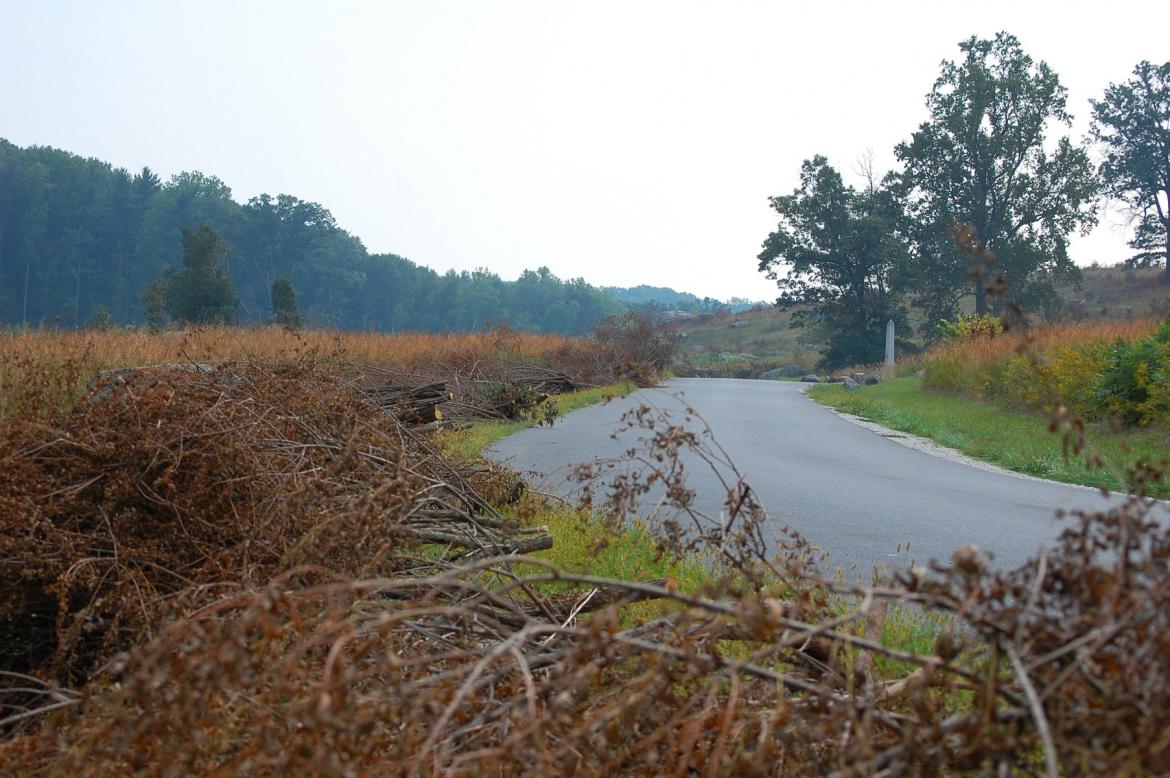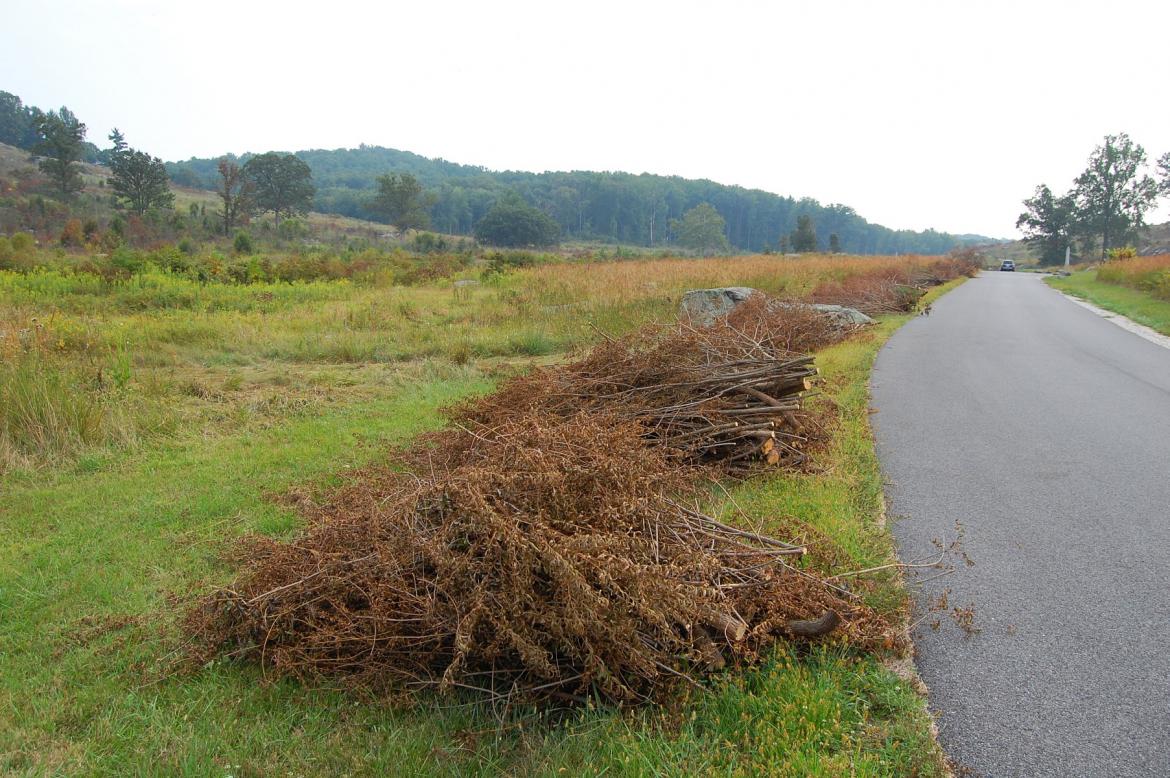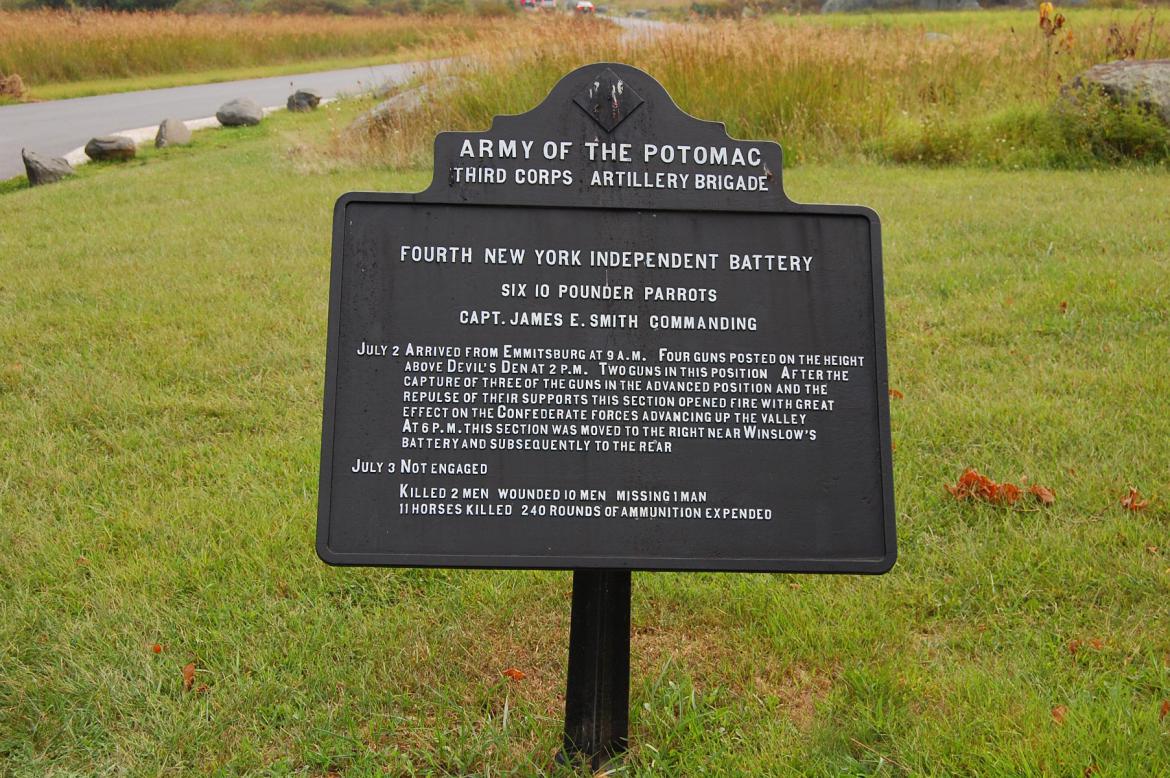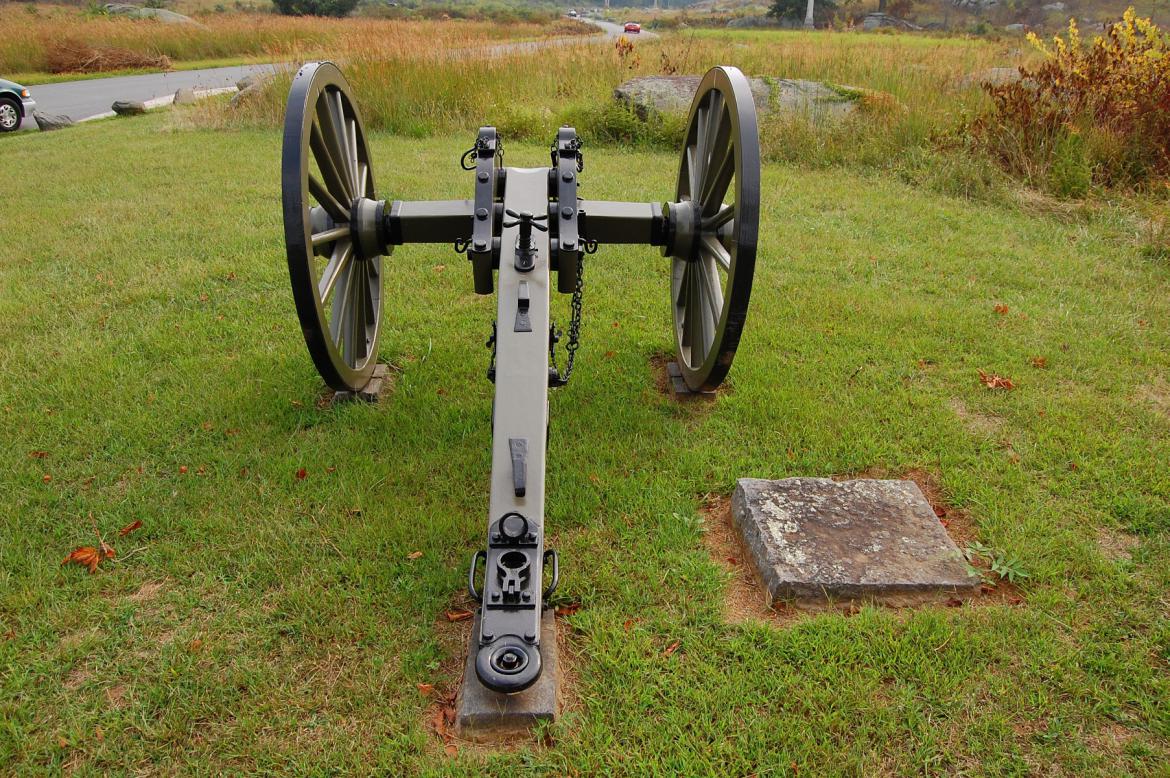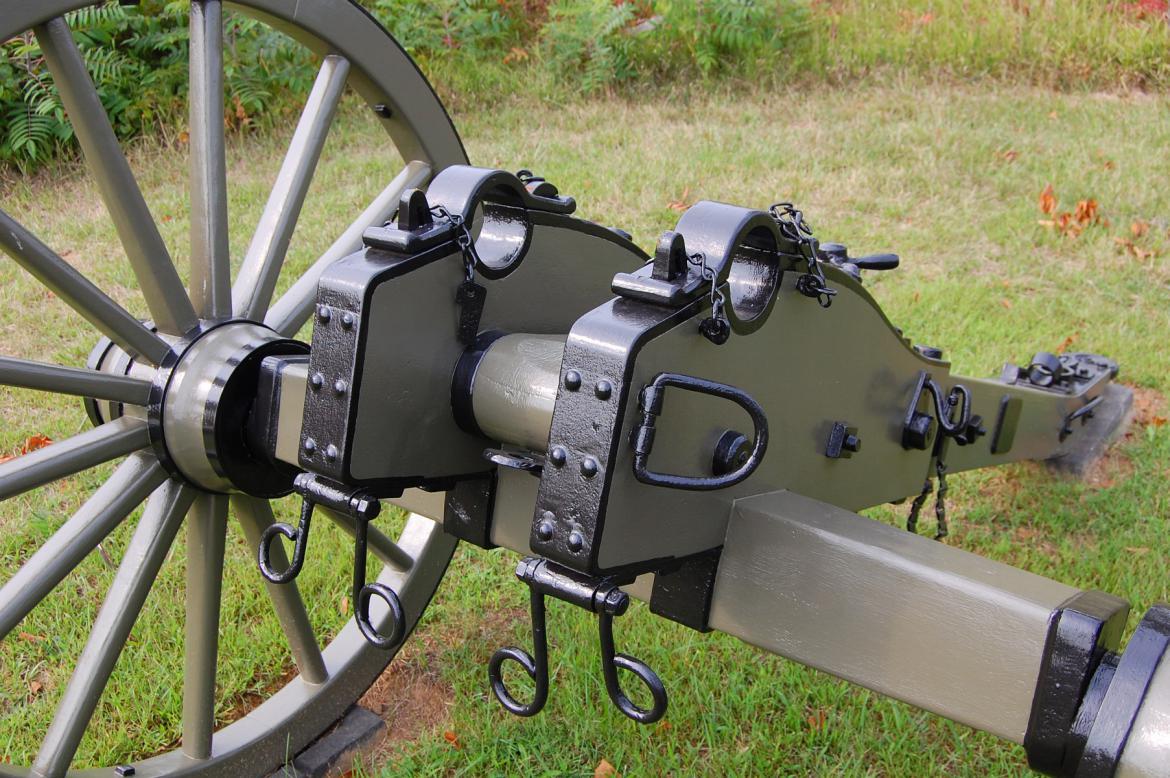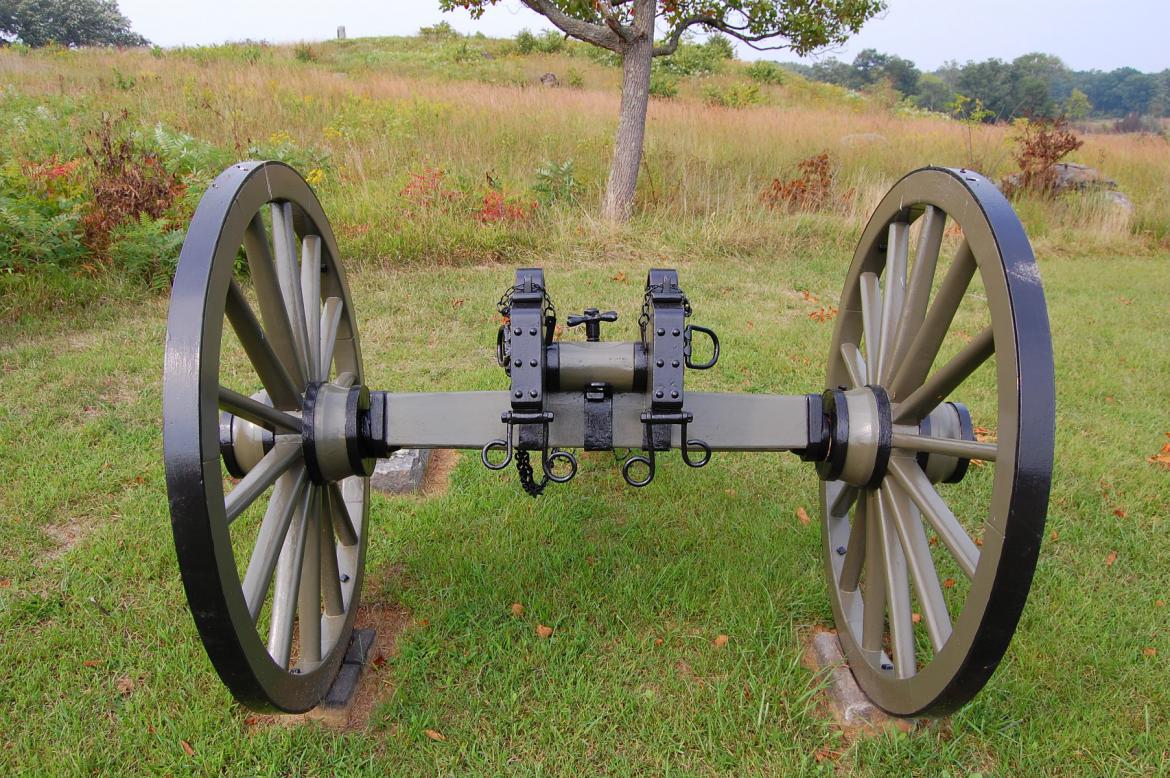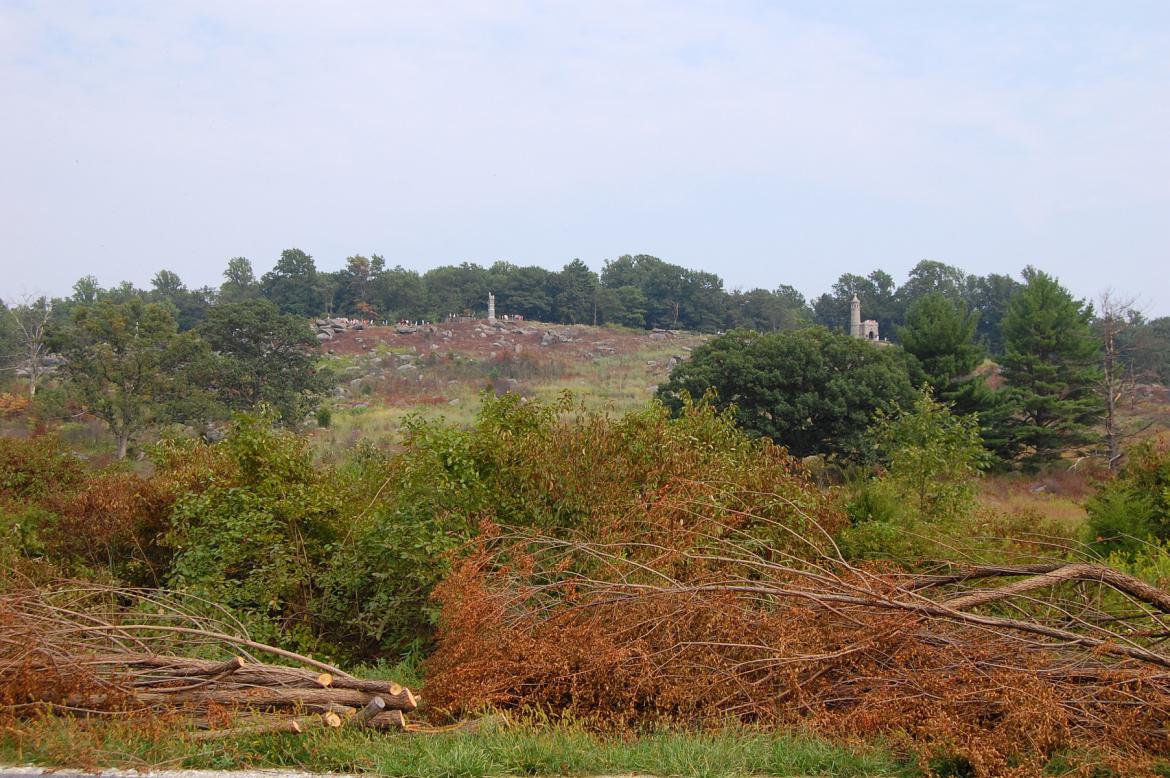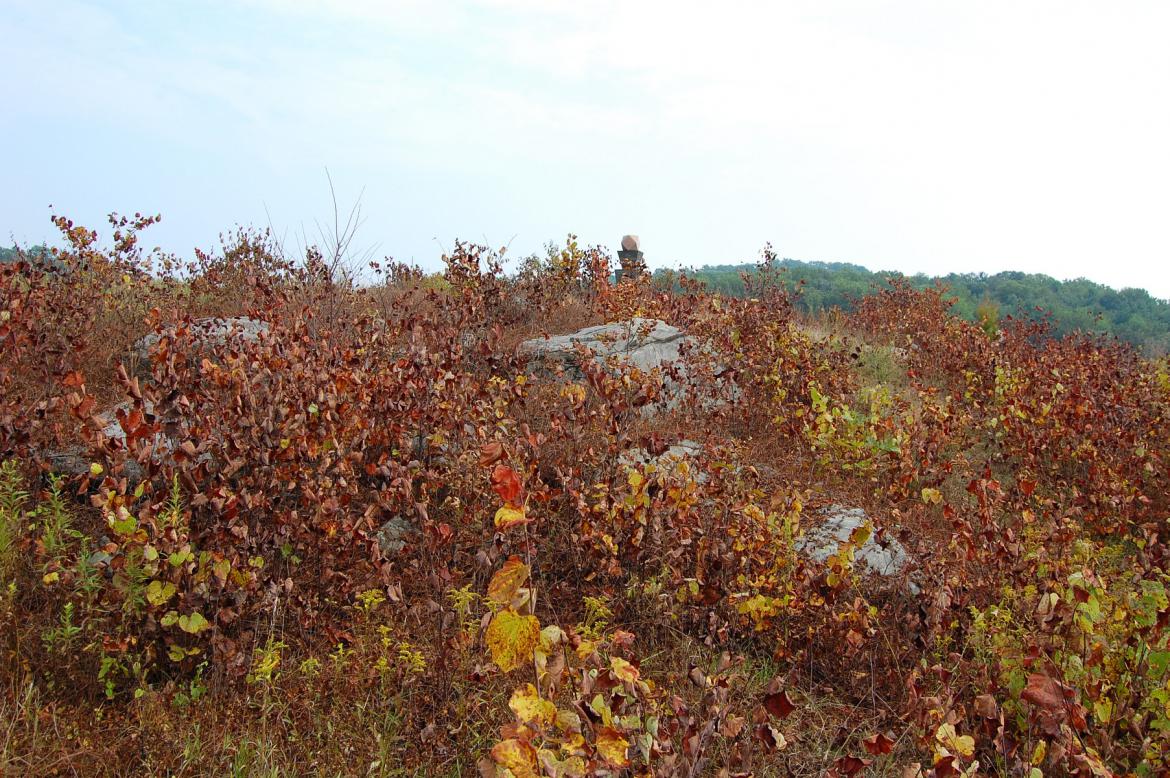The statue to Brigadier General Samuel Wiley Crawford in Plum Run Valley/Valley of Death. This view was taken facing north at approximately 4:30 PM on Sunday, September 4, 2011.
We recently showed you some of the clearing of foliage taking place on the battlefield over the summer. A large portion of that clearing effort has been devoted to the Plum Run Valley on the southern portion of Gettysburg National Military Park.
Before we take a look at the work being done this summer, here is a reminder photo of just how much progress has been made in restoring this area to its 1863 appearance. Large portions of this section of the battlefield were covered for years by plots of woodland and undergrowth… This view was taken facing west circa 1955 and is courtesy of the the Center for Civil War Photography, which has more than 1,000 historic Gettysburg Park images like these on their Flickr.
… and though the viewshed from Little Round Top has improved considerably, vegetation grows exceptionally well (as one would expect) in the Plum Run Valley. We’ll take a walk along Crawford Avenue and take a look at some of the work that’s been done. This view was taken facing north at approximately 4:30 PM on Sunday, September 4, 2011.
We’ve turned to camera right from the previous photo and are now looking towards Little Round Top in the center background. Big Round Top is visible in the right background. Most of the large swaths of vegetative growth in this area follow Plum Run. This view was taken facing southeastt at approximately 4:30 PM on Sunday, September 4, 2011.
We knew National Park Service staff had begun work here because we started to see lots of dead bushes/smaller trees … This view was facing southeast at approximately 4:30 PM on Sunday, September 4, 2011.
… Lots and lots. This view was facing southwest at approximately 4:30 PM on Sunday, September 4, 2011.
This view was facing south at approximately 4:30 PM on Sunday, September 4, 2011.
While we were here we noticed that Smith’s 4th New York Independent Battery has had two of their guns (sans barrels) returned to the field. This view was taken facing southwest at approximately 4:30 PM on Sunday, September 4, 2011.
This view was taken facing south at approximately 4:30 PM on Sunday, September 4, 2011.
This view was taken facing south at approximately 4:30 PM on Sunday, September 4, 2011.
This view was taken facing south at approximately 4:30 PM on Sunday, September 4, 2011.
This view was taken facing west at approximately 4:30 PM on Sunday, September 4, 2011.
They have a fresh coat of paint and look great. This view was taken facing northwest at approximately 4:30 PM on Sunday, September 4, 2011.
This view was taken facing north at approximately 4:30 PM on Sunday, September 4, 2011.
This view was taken facing east at approximately 4:30 PM on Sunday, September 4, 2011.
… But back to the vegetation. One of the problems we outlined recently is that it is very difficult for the National Park Service to maintain the clearing of undergrowth. Despite their best efforts, it’s a challenge to remove vegetation in other parts of the battlefield when areas that were treated in a previous year likely need that attention every single year. This view was taken facing east at approximately 4:30 PM on Sunday, September 4, 2011.
We’re now standing on Houck’s Ridge. The 99th Pennsylvania Infantry Regiment monument (center) is visible in the next three photos. This view was taken facing east at approximately 4:30 PM on Sunday, September 4, 2011.
As you can see, it has also recently been treated with defoliants. This view was taken facing northeast at approximately 4:30 PM on Sunday, September 4, 2011.
We’ve mentioned before that animals were allowed to roam through the woods during the day in 1863, and they would have ate the undergrowth. The soldiers mostly wrote about “open” woods in 1863. This view was taken facing east at approximately 4:30 PM on Sunday, September 4, 2011.
But of course there are other concerns. At a recent Gettysburg National Military Park Commission Advisory meeting it was reported that visitors are “loving Little Round Top to death” and that a Cultural Landscape Evaluation needs to take place to control erosion. Much of the vegetation that might help prevent erosion on some areas of the hill is being actively removed. The “brown” that covers the west slope of Little Round Top in this view is a result of the herbicide used to clear the vegetation. This view was taken facing east at approximately 4:30 PM on Sunday, September 4, 2011.
A few of our readers have emailed us and asked, “Is there a better solution to controlling out of control vegetation?” A common thought for many is to use grazing animals, as farmers would have done in the 19th century. In fact, the National Park Service has tried using grazing animals on Little Round Top in the past, but they harmed rock Union defense works, were “rough” on the hill, and damaged the resource. Vegetation control is a complex issue because it involves a substantial amount of resources and time to address properly, proving to be a balancing act between protecting historic ground, making it friendly to visitors, and restoring the landscape to its 1863 appearance. This view was taken facing east at approximately 4:30 PM on Sunday, September 4, 2011.

